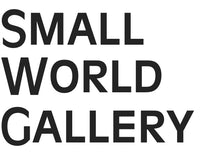
Millefiori - Many Flowers
Millefiori. You may guess it is an Italian word meaning something like “many flowers.” Now I don’t speak Italian, but millefiori remains one of my most memorable words, layered with meaning deep and wide. That’s because one particular many-flowered glass bead from Italy helped set me on my current path.
Here’s the bead, which is worked into one of my early IBISwoman designs. I wear it still.
The bead’s green color was enticing, as was the slightly curved body of its stout tube shape. However, most amazing was the bead’s cell-like pattern with an unblinking eye shape in each. How, for heaven’s sake, did the glassmaker accomplish this feat?
Almost 17 years and a good deal of reading later, I think I understand the ways of millefiori glass -- just a bit — thanks to San Francisco-based expert Jamey D. Allen, writing in John and Ruth Picard’s touchstone book called Millefiori Beads (ISBN 0-9622884-1-1).
Allen writes that millefiori properly refers to a technique of glass decoration. It is an ancient labor saving way to more intensively decorate glass in far less time. When invented in what is now the Middle East in the first millennium, nobody knows for sure what the technique was called. The technique was used extensively in Roman and Alexandrian glass creations in the early millennia AD. Today millefiori derives its name from Italian glassmakers who adopted and extended the millefiori technique many centuries later.
Here’s how it works: Glassmakers first make long, thin canes of glass with patterns and colors rolled inside. They work over exposed flames. Once the canes are cooled, glassmakers chip off bits of the ends — in slices, really, in a way that displays the rod’s internal color and pattern. In a second operation, the glassmaker heats a larger glob of a plain-color glass, usually dark blue, and spins and rolls it on a metal wire to the desired shape and almost to the melting point. Then the glassmaker lays slices from the rods on the surface of the shape — with wider chip surfaces face down and using metal tweezers to situate them close together. Then glassmaker re-heats the entire piece again so that newly introduced surface chips will melt into each other, edges meeting edges. The glassmaker removes the decorated tube from the fire and uses flat metal surfaces and tools to shape and bend into the finished product.
This ingenious process — some experts call it a mosaic — allows glassmakers to repeat patterns quickly, smoothly and predictably as compared to the tiny pieces of handwork that would otherwise have been needed to accomplish the same intricate effect.
That first millefiori of mine is likely a late 19th or early 20th century Italian-made cylinder, although round and rectangular millefiori were also made. It was curved just a little so that it may have been more easily worn around the neck with other so-called “elbow” millefiori beads. Its eye pattern of the cane glass was popular for its help in keeping bad spirits away; in other millefiori can be seen floral and star patterns -- and mixes in just one bead. In fact, some millefiori masters created canes with intricate portraits and landscapes.
The Picards’ book is chockfull of their researched and photographed samples of millefiori from private and museum collections worldwide. In Murano, Italy, the millefiori style is still used today with two factories remaining that make cane glass for layering, say the Picards, writing in 1986. They also note that more safe, varied and brighter colorants are available now.
Thus, millefiori is more to me than an Italian word meaning "many flowers.” For me, it also means many centuries, many hands, many cultures. And that’s not counting the many aspects of trade involved in millefiori glass. The purchase of that first millefiori bead led me to many hours of satisfying research and at least a little bit of understanding of this complex and ancient technique.
Please ask Briana or me to show you the IBISwoman collection of millefiori beads. They are treats for the eye as well as the mind, and we’d be happy to share the names of reference books we consult and experts we follow.

